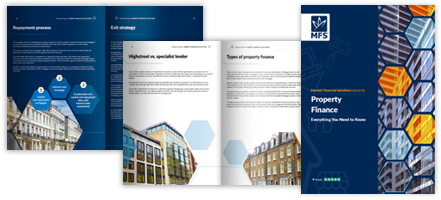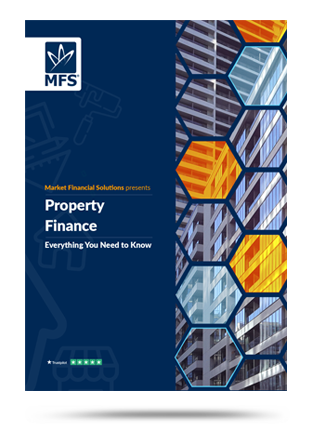Disclaimer
Market Financial Solutions are a bridging loan and buy-to-let mortgage provider, not financial advisors. Therefore, Investors are encouraged to seek professional advice. The information in this content is correct at time of writing.

Answering why is there a housing crisis in the UK is not easy. Several historical decisions and precedents led to where we are today. What’s more, the lack of action of previous Governments, wider industry, establishment – however they’re referred to – also contributed to our challenges.
There is no one right answer but generally, it’s believed that a supply and demand imbalance, rising costs, and other economic factors have led to the housing market’s current issues. Also, there is a historical legislative context that needs to be taken into account to understand how we reached this point.
Housing Crisis in the UK – The Historical Context
We all know there is a lack of housing supply in the UK. Generally, it’s believed we need to build at least 300,000[1] new homes every year to match demand, and keep the market stable. But, we haven’t come close to hitting that target for several years.
There is no getting away from it, it is hard to build new homes in this country[2]. Why though? Why is there a housing crisis in the UK at all if we know simply building more homes will resolve most of the issues?
Arguably, as a starting point, we should look at the Town and Country Planning Act of 1947[3]. This act introduced a much more restrictive system of planning than what came before, and paved the way for our greenbelts.
Indeed, in the early 1950s, most housebuilding was completed by local authorities, as opposed to private enterprise or housing associations[4]. Housebuilding peaked in the 1960s, with relatively even contributions from both the public and private sectors, but efforts petered out from the 1980s onwards.
Here is where we find another substantial piece of legislation which may have had long-reaching ramifications. The Housing Act of 1980[5] introduced the right to buy legislation as we know it today. Right to buy allowed council tenants to purchase their homes at a discount, allowing many people to get on the housing ladder in the process.
The problem was/is that as council housing was sold off, it wasn’t replaced[6]. Affordable options for those on lower incomes or facing economic difficulties became scarce. Private providers have struggled to accommodate the needs of the market ever since.
This struggle extends to the private rented sector too. The housing crisis in the UK is often framed as being an acquisition problem, with there not being enough homes for all the would-be buyers out there. Or, that family homes are now out of reach for most.
But, the British obsession with homeownership didn’t really emerge until the second half of the 20th century[7]. For much of our history, we have been a nation of renters. Even now, renters outnumber mortgage holders by nearly 1.5 million [8]in the UK. Unfortunately, the threat of tougher legislation[9] for landlords also limits options in the rental market[10].
Also, while the obvious acts played a huge role, we should remember that there are countless others that may have also have an impact. With so many rules to follow, operating in the current market is being viewed as becoming increasingly complicated.
The Housing and Planning Act 2016, Tenant Fees Act 2019, and even the Coronavirus Act 2020 [11]are just some of the more recent examples of added complexity. This isn’t to mention any EU laws[12], or environmental regulations[13].

Finances and the Economy
Supply and demand problems, as obvious as they are, cannot solely be blamed for why there is a housing crisis in the UK however. Certain financial and economic changes have had their impact on the property market.
In fact, John Lewis and Fergus Cumming, both seasoned economists, previously argued in an academic blog for the Bank of England that: “the rise in real house prices since 2000 can be explained almost entirely by lower interest rates. Increasing scarcity of housing, evidenced by real rental prices and their expected growth, has played a negligible role at the national level[14].”
It’s often forgotten that near-zero rates are a relatively new phenomenon, and they have distorted our economy on an unprecedented scale. While an oversimplification, central banks across the world cut rates after the fallout of the 2008 crisis[15].
This, in effect, made money very cheap, with borrowing costs being negligible for around 15 years or so. Much of this cheap money filtered its way into various assets as investors sought tangible returns. Share prices, cryptocurrency, and real estate values were – many believe – inflated as a result[16].
Investors and homeowners with good timing did well here, seeing their asset values rise, while their debt costs remained low. This is likely why we’re now seeing participants resist and lament the fact that interest rates are reaching historically normal levels again.
Still, as house prices skyrocketed, it became very difficult for many to get by. In some places, house prices are now 17 times higher than average yearly earnings[17], while average UK rents outside of London recently hit a record high of £1,316 a month[18].
Social and Demographic Changes
Our changing demographics can also go some way in addressing why there is a housing crisis in the UK. For example, our population is aging, with the proportion of people aged 65 and over expected to increase by around 50% by 2039, according to the ONS[19]. This means there will likely be a lot of pressure to build suitable retirement housing over the coming years, likely at the expense of younger families.
Intergenerational tension is a side effect of the current housing crisis. Many baby boomers are ‘refusing’ to downsize, despite underutilising their existing homes[20]. This creates issues for younger generations who may want to utilise these spaces for starting families.
These problems tend to snowball too, or add to other dilemmas. According to The Health Foundation, 26%[21] of people on the lowest incomes have high housing costs relative to their income, with 16 to 24-year-olds struggling in particular. Meanwhile, 8.2% of households in the social rented sector and 5.1% in the private rented sector were overcrowded in 2022/23[22].
Property investors, public officials, homeowners and all manner of participants have been trying to figure out how to solve the UK housing crisis for some time now. We have a new Labour government in power, which plans to free up planning restrictions, force local councils to build more homes, and get 1.5 million new homes built within five years[23].
It remains to be seen if these plans help, or if they even come to fruition. But, what we know for sure, is that any stable housing market will require motivated, and willing private players.
Public efforts will only go so far and landlords, developers, fix-and-flippers, and other investors will have a key role to play in tackling the housing crisis in the UK, and we will be here with bespoke financial solutions to help them along their way.
[1] https://www.gov.uk/government/publications/new-homes-fact-sheet-1-the-need-for-homes/fact-sheet-1-the-need-for-homes
[2] https://www.ft.com/content/07abecc4-f49c-4ed8-b6ca-28e46d9a9bf2
[3] https://www.spectator.co.uk/article/the-trouble-with-labours-new-towns-plan/
[4] https://www.ft.com/content/38cc3f80-ddfb-4937-9d0f-808e982eb0f9
[5] https://lordslibrary.parliament.uk/right-to-buy-past-present-and-future/#heading-3
[6] https://neweconomics.org/2022/05/the-damaging-legacy-of-right-to-buy
[7] https://www.schroders.com/en-gb/uk/intermediary/insights/what-174-years-of-data-tell-us-about-house-price-affordability-in-the-uk/
[8] https://www.nimblefins.co.uk/number-homeowners-and-renters-uk
[9] https://www.investorschronicle.co.uk/ideas/2024/07/09/what-the-labour-government-means-for-landlords/
[10] https://inews.co.uk/news/business/housing-shortage-blamed-as-tenants-face-advertised-rents-hitting-record-highs-3143643
[11] https://thebla.co.uk/housing-acts/
[12] https://www.gov.uk/government/news/100000-more-homes-to-be-built-via-reform-of-defective-eu-laws
[13] https://www.localgov.co.uk/Environmental-regulations-holding-back-housebuilding/57984
[14] https://bankunderground.co.uk/2019/09/05/houses-are-assets-not-goods:-what-the-difference-between-bulbs-and-flowers-tells-us-about-the-housing-market/
[15] https://www.bankofengland.co.uk/monetary-policy/the-interest-rate-bank-rate
[16] https://www.theguardian.com/business/2022/nov/27/conflict-of-interest-have-low-cash-rates-created-the-everything-bubble
[17] https://www.bbc.co.uk/news/articles/cxxx609w12lo
[18] https://www.propertyreporter.co.uk/average-rents-outside-of-london-hit-new-record-of-1316-per-calendar-month.html?SRC=MC&dm_i=7MRI,4EMG,QJ95B,IIOG,1
[19] https://northernlifemagazine.co.uk/how-demographic-shifts-are-reshaping-housing-markets-across-the-uk/
[20] https://www.telegraph.co.uk/money/property/baby-boomers-not-downsizing-holding-on-large-homes/
[21] https://www.health.org.uk/evidence-hub/housing/housing-affordability/inequalities-in-housing-affordability
[22] https://www.health.org.uk/evidence-hub/housing/housing-stability-and-security/trends-in-household-overcrowding-by-tenure
[23] https://www.itv.com/news/2024-07-08/the-plan-to-fix-a-country-wide-housing-crisis-that-has-lasted-for-decades
The Complete Guide to
Property Finance
Everything you need to know
- Foundation & different finance types
- Useful tools
- Apply them in real life
- Market insights & more





